Managing Modern Desktop
Rp500,000 Rp250,000
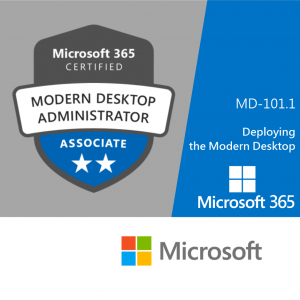
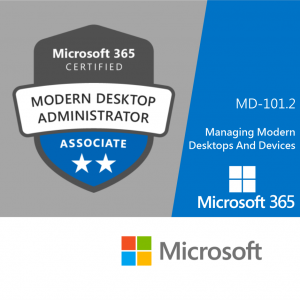
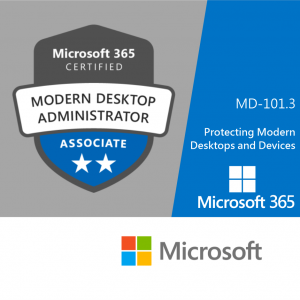
- Description
- Unit Outline
- Instructor
- Additional information
- Certificate
- Reviews (0)
Description
About this course
In this course, students will learn how to plan and implement an operating system deployment strategy using modern deployment methods, as well as how to implement an update strategy. Students will be introduced to key components of modern management and co-management strategies. This course also covers what it takes to incorporate Microsoft Intune into your organization. Students will also learn about methods for deployment and management of apps and browser-based applications. Students will be introduced to the key concepts of security in modern management including authentication, identities, access, and compliance policies. Students will be introduced to technologies such Azure Active Directory, Azure Information Protection and Windows Defender Advanced Threat Protection, as well as how to leverage them to protect devices and data.
Installing Windows 10
- Learn how to support the installation tasks associated with Windows 10. Students will develop skills that include learning how to install and customize Windows 10 operating systems. Students will also learn about the new Windows servicing model and methods for keeping Windows up to date. The course will conclude with common post-installation tasks.
Configuring Windows 10
- Learn how to secure the Windows 10 OS and protect the data on the device. Students will be introduced to common methods used for authentication and access control. This course will teach how to configure file and folder permissions and creating security policies. Students will also be introduced to the different types of external threats and how to leverage features like encryption and firewalls, as well as tools like Windows Defender.
Protecting Windows 10
- Learn how to support the configuration tasks associated with Windows 10. Students will develop skills that include managing storage, files, drivers, and printers as well as how to configure network connectivity for Windows 10. This course will also cover managing and deploying applications.
Maintaining Windows 10
- Learn how to manage and troubleshoot Windows 10. This course will deep-dive into the architecture and tools used for managing, monitoring, and troubleshooting the OS, Apps, and hardware. Students will learn about proactive and troubleshooting methodology, and how to identify and mitigate common issues.
Deploying the Modern Desktop
Module 1: Planning an Operating System Deployment Strategy
This module explains how to plan and implement a deployment strategy. It covers various methods and scenarios for deploying Windows. It discusses on-premise and cloud technologies as well as considerations for new deployments, upgrading, and migrations.
Lessons
- Overview of Windows as a service
- Windows 10 Deployment options
- Considerations for Windows 10 deployment
Lab : Practice Lab – Planning Windows 10 deployment
After completing this module, students will be able to:
- Describe Windows as a Service.
- Describe the different methods for deployment.
- Understand the differences between on-premise and cloud-based solutions.
- Describe methods of dynamic provisioning.
- Describe the different tools available in the Windows Assessment and Deployment Kit.
- Describe the scenarios and limitations for in-place upgrades and migrations.
Module 2: Implementing Windows 10
This module covers new modern methods for deploying Windows 10 such as Windows Autopilot and provisioning packages. This module also covers tool used in upgrade planning, application compatibility and migration methods.
Lessons
- Implementing Windows 10 by using dynamic deployment
- Implementing Windows 10 by using Windows Autopilot
- Upgrading devices to Windows 10
Lab : Practice Lab – Implementing Windows 10
- Creating and deploying provisioning package
- Migrating user settings
- Deploying Windows 10 with AutoPilot
After completing this course, learners should be able to:
- Develop an Operating System deployment and upgrade strategy
- Understand the different methods of deployment.
- Understand which scenarios on-premise and cloud-based solutions can be used for.
- Deploy and migrate desktops to Windows 10.
- Plan and configure Windows Update policies.
Module 3: Managing Updates for Windows 10
This module covers managing updates to Windows. This module introduces the servicing options for Windows 10. Students will learn the different methods for deploying updates and how to configure windows update policies.
Lessons
- Implementing Windows 10 by using dynamic deployment
- Implementing Windows 10 by using Windows Autopilot
- Upgrading devices to Windows 10
Lab : Practice Lab – Managing Updates for Windows 10
- Manually configuring Windows Update settings
- Configuring Windows Update by using GPOs
After completing this module, students will be able to:
- Describe the Windows 10 servicing channels.
- Configure a Windows update policy using Group Policy settings.
- Configure Windows Update for Business to deploy OS updates.
- Use Windows Analytics to assess upgrade readiness and update compliance.
Managing Modern Desktops and Devices
Module 4: Device Enrolment
In this module, students will examine the benefits and prerequisites for co-management and learn how to plan for it. This module will also cover Azure AD join and will be introduced to Microsoft Intune, as well as learn how to configure policies for enrolling devices. The module will conclude with an overview of device inventory in Intune and reporting using the Intune console, Power BI and Microsoft Graph.
Lessons
- Device management options
- Manage Intune device enrolment and inventory
Lab : Practice Lab – Device Enrolment and Management
- Installing the MDM Migration Analysis Tool (MMAT)
- Obtain Intune and Azure AD Premium licenses and enable device management
- Enrolling devices in Intune
- Managing devices in Intune
- Creating device inventory reports
After completing this module, students will be able to:
- Describe benefits and methods for migrating to co-management.
- Deploy an MDM with Microsoft Intune.
- Configure device enrolment.
- Enrol desktop and mobile devices in Windows Intune.
- Configure and downloads inventory reports.
Module 5: Configuring Profiles
This module dives deeper into Intune device profiles including the types of device profiles and the difference between built-in and custom profiles. The student will learn about assigning profiles to Azure AD groups and monitoring devices and profiles in Intune. The module will conclude with an overview of using Windows Analytics for health and compliance reporting.
Lessons
- Configuring device profiles
- Managing user profiles
- Monitoring devices
Lab : Practice Lab – Managing profiles
- Configuring roaming user profiles and Folder Redirection
- Create and deploy device profile based on the scenario
- Change deployed policy and monitor user and device activity
- Configuring Enterprise State Roaming
After completing this module, students will be able to:
- Describe the types of device profiles.
- Create and assign device profiles.
- Configure user profile and folder redirection.
- Monitor and report on devices using Intune and Windows Analytics.
Module 6: Application Management
In this module, students learn about application management on-premise and cloud-based solutions. This module will cover how to manage Office 365 ProPlus deployments in Intune as well as how to manage apps on non-enrolled devices. The module will conclude with an overview of Enterprise Mode with Internet Explorer and Microsoft Edge and tracking your installed applications, licenses, and assigned apps using Intune.
Lessons
- Implement Mobile Application Management (MAM)
- Deploying and updating applications
- Administering applications
Lab : Practice Lab – Managing Applications
- Deploying apps by using Intune
- Configure and deploy Office 365 ProPlus from Intune
- Configure mobile application management (MAM) policies in Intune
After completing this module, students will be able to:
- Describe the methods for application management.
- Deploy applications using Intune and Group Policy.
- Configure Microsoft Store for Business.
- Deploy Office365 ProPlus using Intune.
- Manage and report application inventory and licenses.
- Configure Internet Explorer Enterprise Mode.
Protecting Modern Desktops and Devices
Module 7: Managing Authentication in Azure AD
In this module, students well be introduced to the concept of directory in the cloud with Azure AD. Students will learn the similarities and differences between Azure AD and Active Directory DS and how to synchronize between the two. Students will explore identity management in Azure AD and learn about identity protection using Windows Hello for Business, as well as Azure AD Identity Protection and multi-factor authentication. The module will conclude with securely accessing corporate resources and introduce concepts such as Always On VPN and remote connectivity in Windows 10.
Lessons
- Azure AD Overview
- Managing identities in Azure AD
- Protecting identities in Azure AD
- Managing device authentication
- Enabling corporate access
Lab : Practice Lab – Managing objects and authentication in Azure AD
- Enabling and configuring Azure AD Premium with Enterprise Mobility + Security (EMS) tenant
- Creating user and group objects with UI and Windows PowerShell
- Configuring Self-service password reset (SSPR) for user accounts in Azure AD
- Joining a device to Azure AD
After completing this module, students will be able to:
- Describe the capabilities of Azure AD.
- Manage users using Azure AD with Active Directory DS.
- Implement Windows Hello for Business.
- Join devices to Azure AD.
- Describe methods of enabling access from external networks.
Module 8: Managing Devices and Device Policies
In this module, students will be introduced to managing device security with Intune. Students will discover how Intune can use device profiles to manage configuration of devices to protect data on a device. Students will learn how to create and deploy compliance policies and use compliance policies for conditional access. The module concludes with monitoring devices enrolled in Intune.
Lessons
- Microsoft Intune Overview
- Managing devices with Intune
- Implement device compliance policies
Lab : Practice Lab – Managing devices
- Configuring Microsoft Intune for device management
- Configuring compliance policies and device profiles
- Enrolling Windows 10 devices and managing compliance
After completing this module, students will be able to:
- Describe mobile device management with Intune.
- Create and assign device profiles to protect data on devices.
- Deploy compliance and conditional access policies.
- Use Intune to monitor device compliance.
Module 9: Managing Security
In this module, students will learn about data protection. Topics will include Windows & Azure Information Protection, and various encryption technologies supported in Windows 10. This module also covers key capabilities of Windows Defender Advanced Threat Protection and how to implement these capabilities on devices in your organization. The module concludes using Windows Defender and using functionalities such as antivirus, firewall and Credential Guard.
Lessons
- Implement device data protection
- Managing Windows Defender ATP
- Managing Windows Defender in Windows 10
Lab : Practice Lab – Managing Security in Windows 10
- Configuring Encrypting File System (EFS)
- Configuring BitLocker
- Configuring a WIP policy in Intune
- Configuring Windows Defender
After completing this module, students will be able to:
- Describe the methods protecting device data.
- Describe the capabilities and benefits of Windows ATP
- Deploy and manage settings for Windows Defender clients.
Module 10: Course Conclusion
Lessons
- Final Exam
Lab : Graded Lab

Brian Hinkelman – has over 20 years’ experience in IT, working as a Desktop Technician, Network Administrator, IT Manager and Web Application Developer. In recent years, he has worked as pre-sales engineer in the enterprise space, and formerly a Microsoft Datacenter TSP. Brian now manages the Modern Desktop track at Microsoft Worldwide Learning.

Andrew Warren is a Microsoft Certified Trainer with three decades of IT experience. He has been writing for Microsoft for many years and has helped to develop Microsoft’s official curriculum instructor-led training material. Andrew served as a subject matter expert on many of the current Windows Server 2016 courses, was technical lead on several of the Windows 10 titles, and was involved in Office 365, Azure, and Intune course development. Andrew is also the author/co-author of four Microsoft Press Exam Ref series book titles, including “Configuring Windows Devices” and “Installing and Configuring Windows 10”. When not writing about Microsoft technologies, Andrew can be found in the classroom, teaching other IT professionals what they need to know to manage their organization’s IT infrastructure.

Michael Buchardt is an independent consultant and trainer based in Copenhagen, Denmark. He has extensive experience consulting for some of the largest companies and institutions in Denmark on System Center Configuration Manager, Azure, Intune, Active Directory, and infrastructure and virtualization. Michael is a highly experienced trainer and has been an active MCT since 2001. He has taught 300+ Microsoft Official Courses, and holds certifications in every Windows operating system since Windows 2000. He has helped to develop Microsoft’s official curriculum instructor-led training material. Michael has served as a subject matter expert on the System Center Configuration Manager courses, Windows Server 2016 courses among others. He has worked for various training centers and consulting firms before starting his own company Mimercon in 2012, where he now offers consulting and freelance training.

Damir Dizdarevic is the CEO of the one of the largest IT companies in Bosnia and Herzegovina—Logosoft d.o.o. Sarajevo. He has a BSc in Mathematics and is a Microsoft Certified Solution Expert (MCSE) in several specialization areas; a Microsoft Certified Solutions Associate (MCSA) in both Office 365 and Azure; and a Microsoft Certified Trainer (MCT) specialized for cloud, infrastructure, and identity solutions. In the 20+ years of his career in IT, Damir mostly worked as a systems designer, project lead, and consultant. Damir regularly writes Microsoft Official Curriculum (MOC) courses and very often speaks at Microsoft conferences about identity and data protection, Office 365, Exchange, and related topics. He is the founder and president of a Bosnian community of Microsoft users, administrators, engineers, and developers (MSCommunity BiH). He consistently receives high grades as a speaker at Microsoft conferences in Europe and at non-Microsoft IT conferences. So far, he has published more than 400 technical articles for various IT magazines and portals. In the last few years, he has actively authored MOC courses about identities in Azure and about Office 365. Damir has been a Microsoft Most Valuable Professional (MVP) since 2007 and a Microsoft Regional Director since 2017.
Additional information
| Author / Publisher | Microsoft |
|---|---|
| Level | Beginner, Intermediate |
| Language | English |
Certificate
When you enrolled into this course you will automatically get a Certificate of Participation for completing the course. An example is provided below.
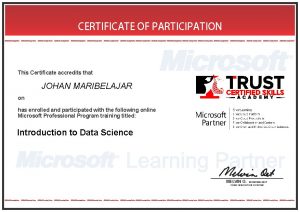
Only logged in customers who have purchased this product may leave a review.


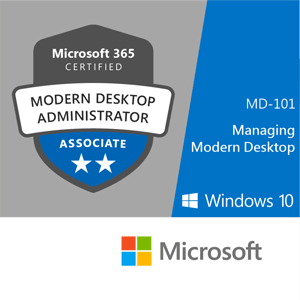
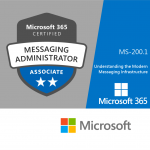
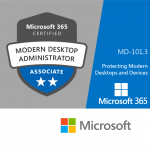



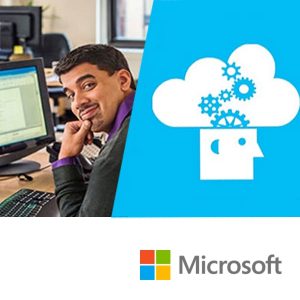

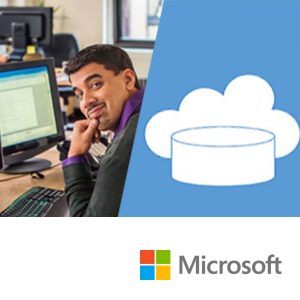

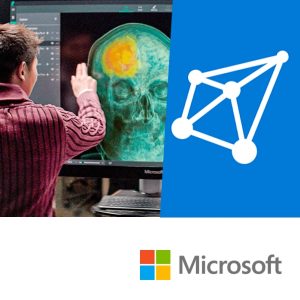

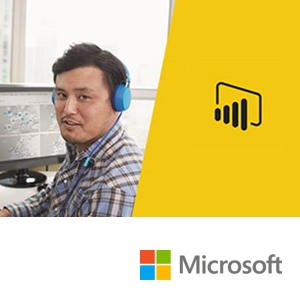

Reviews
There are no reviews yet.